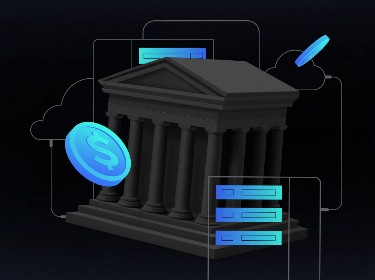In the digital age, data isn't just the new oil — it's the currency that drives our future. Crafting a robust data governance strategy is essential, as it's the blueprint that transforms your business data into gold.
As businesses continue to generate vast amounts of data, the need for a structured and effective data governance strategy becomes paramount. However, creating it is not a one-size-fits-all endeavor; it requires a deep understanding of a company’s data landscape, objectives, and challenges.
No matter whether you’re dealing with customer information, financial records, or operational metrics — tailoring your data governance approach is key to achieving success. This involves collaboration across departments, aligning business goals with data management practices, and creating a culture that prioritizes responsible data handling.
Dive deeper into the realms of data governance with our comprehensive guide, where we break down each crucial step in the process.
What is a data governance strategy?
A data governance strategy is the overarching framework and plan of action that organizations implement to manage, utilize, and protect data assets. The strategy ensures that data is consistent, trustworthy, and used properly across the entire organization.
A data governance strategy encompasses various aspects such as data quality and policies, business processes, and risk management. Such a strategy also helps organizations comply with external regulations and internal policies, reduces the risk of data breaches, and ensures that decision-makers have access to reliable and accurate data.
How to develop an effective data governance strategy in 10 steps
Let’s explore ten steps that provide a roadmap to architecting an effective and holistic data governance strategy, paving the way for informed, data-driven decision-making, enhanced security, and superior operational efficiency.
![]()
Step 1. Define business goals to achieve with a new strategy
You need to set clear and measurable objectives for your enterprise data governance strategy. Quantifying these goals is essential, as it enables your business to effectively track progress, validate success, and demonstrate the ROI of governance initiatives.
For instance, if data quality is the priority, then a tangible metric could be “Reduce the number of data anomalies by 30% in the next quarter.” Or, a company might aim to “Increase the accuracy of customer data by 50% in the next 12 months.”
Step 2. Engage key stakeholders from across the organization
Involve representatives from various departments, teams, and hierarchical levels who have a vested interest or influence in how data is managed, used, and protected within the organization. By doing so, you can ensure that the strategy reflects diverse viewpoints and addresses a wide range of needs and concerns.
You can also consider conducting workshops, meetings, and discussions to gather your stakeholders’ input. These interactions help identify pain points, priorities, potential challenges, and opportunities related to data management and governance. It’s important to actively listen to their feedback and integrate their suggestions when formulating the strategy.
Step 3. Identify and analyze your existing data landscape
This step involves identifying, cataloging, and thoroughly analyzing the various types of data that your organization currently collects, processes, and stores.
The goal here is to gain insights into the volume, variety, quality, and usage patterns of your data assets. By conducting a comprehensive analysis, you can uncover valuable information such as where the data resides, how it flows between different systems, who uses it, and for what purposes.
To successfully navigate this stage of the data governance strategy development process, consider the following tasks:
- Data inventory: Create an inventory of all data sources, repositories, databases, and systems that store organizational data. This includes both structured and unstructured data.
- Data profiling: Profile the data to explore its characteristics, including data quality, accuracy, completeness, and consistency. This helps identify any data issues that need to be addressed.
- Data flow mapping: Undertake this to understand how data moves from one system to another and how it is transformed along the way.
- Data usage analysis: Identify who uses the data and for what purposes. This can help prioritize data assets that are critical for various business processes.
- Data security assessment: Evaluate the sensitivity of the data and assess if it complies with relevant regulations and privacy requirements.
- Data dependencies: Identify dependencies between different data sets and systems. This can help anticipate the impact of changes on other parts of the organization.
By performing a comprehensive analysis of your existing data landscape, you will be able to make more informed decisions about the next steps in your enterprise data governance strategy.
Check out the main data integration techniques and see how to choose the perfect fit for your organization
This article is part of our larger series dedicated to Data governance. To explore this topic in greater detail, here’s the list of articles we recommend:
An In-Depth Guide to the 15 Best Data Governance Practices and Principles for Your Business
Data Governance Framework: Components, Advantages, and Development Strategies
Unstructured Data Management From A to Z: Definition, Challenges, and Tools
Step 4. Assess your current data governance capabilities
This step will help you gain a clear understanding of where your organization stands in terms of data governance maturity. By assessing your current capabilities, you can identify strengths to build upon and weaknesses that need to be addressed as you move forward with your strategy.
When evaluating your current processes, identify the gaps between your current state and the desired state. This helps pinpoint areas that need improvement or enhancement. You will also need to gather feedback from stakeholders who are involved in or impacted by data governance processes. Their perspectives can provide valuable insights into the effectiveness of current practices.
Additionally, evaluating the tools and technologies you currently use for data governance, as well as examining the related documentation, is a must.
Step 5. Establish your company’s data policies
Data policies ensure that everyone within the organization follows the same set of rules when it comes to data usage and management. They also establish guidelines for data privacy, security, and ethical use, reducing the risk of legal and regulatory issues.
When creating data policies, consider the following five points:
- Categorize data based on sensitivity levels and define access controls accordingly.
- Specify how long to retain data, determining which types should be retained and which ones should be deleted.
- Outline guidelines for sharing data, both internally and externally, including partners and third parties.
- Define roles and responsibilities for data stewardship and ownership.
- Explain how data will be used and shared to ensure alignment with business objectives.
Need to enable informed decision-making? Check out our business intelligence service offering and let’s see how we can assist you
Step 6. Outline the roles and duties of personnel engaged in data governance
During this stage, you need to define specific roles associated with data governance and create a list of responsibilities for each role. Another critical aspect to address is the establishment of a reporting structure. To whom does the data steward report? Who oversees the entire governance process? This step ensures a transparent pathway for the escalation and resolution of issues.
It’s also important to establish distinct communication channels among various roles and highlight how they will collaborate.
Take a look at a potential list of roles and corresponding responsibilities within the data governance strategy.
![]()
Step 7. Document your data governance strategy
Documenting the data governance strategy serves as a critical reference point for all stakeholders involved, ensuring clarity, consistency, and alignment throughout the organization’s data management efforts.
By meticulously documenting all the above-mentioned aspects, organizations not only foster a shared understanding of data governance practices but also provide a foundational resource that guides implementation, training, and continuous enhancement activities. Regular updates to this documentation further ensure the strategy’s adaptability to changing industry standards, technological advancements, and organizational dynamics, thereby maintaining its relevance over time.
Step 8. Build a custom data governance model
You will need to build a data governance model tailored to your organization’s specific needs, challenges, goals, as well as your organization’s size, industry, regulatory environment, and existing data infrastructure. This model will serve as the framework for implementing and maintaining your data governance program effectively.
![]()
Our company specializes in custom software development and offers you meticulously tailored solutions to meet your business needs
Step 9. Identify and prevent potential data security risks
In the process of developing a data governance strategy, potential data security risks should never be overlooked. This step is essential to guarantee the confidentiality, integrity, and availability of your organization’s data.
During this stage, consider engaging in the following activities:
- Risk assessment: Evaluate data storage, transmission, and processing practices, and identify points of entry for unauthorized access.
- Threat identification: Identify potential internal and external threats that could compromise data security, such as cyberattacks, data breaches, and human error.
- Access controls: Implement access controls and authentication mechanisms, such as role-based access and multi-factor authentication, to ensure that only authorized individuals can access sensitive data.
- Encryption techniques: Employ data encryption for both data at rest and in transit. This will assist in safeguarding data from unauthorized access, even if intercepted.
- Regular audits: Detect and rectify potential security gaps and vulnerabilities and ensure compliance with security policies.
- Incident response plan: Develop a comprehensive incident response plan to address data breaches or security incidents promptly and effectively.
In order to avoid legal issues and maintain compliance, organizations must consider various data protection laws and regulations. Among the key laws are:
- The General Data Protection Regulation (GDPR), which applies to organizations handling data of EU residents
- The California Consumer Privacy Act (CCPA), covering companies collecting personal information from California residents
- The Health Insurance Portability and Accountability Act (HIPAA), relevant to healthcare organizations in the US
- The Payment Card Industry Data Security Standard (PCI DSS), which pertains to organizations managing payment card data.
Discover how data analytics is utilized for risk management purposes and learn how to implement this approach in your business
Step 10. Execute, assess, and adapt your data governance strategy
In this final step, the developed data governance strategy is put into action. As execution progresses, regular evaluations become crucial. They measure the strategy’s effectiveness against defined goals and KPIs. Identifying gaps or deviations from the intended outcomes allows for timely corrective actions.
Adaptation is also an integral part of the process. Feedback and insights gained from execution and assessment allow for necessary adjustments to the strategy. External factors such as technological advancements, regulatory changes, and evolving business needs may prompt revisions. Adapting the strategy ensures its relevance and longevity in a dynamic data landscape.
By consistently monitoring and adapting the data governance strategy, organizations can maintain data integrity, maximize value, and foster a culture of responsible data management.
Explore 15 best data governance practices for your business
What makes a good data governance strategy?
A successful enterprise data governance strategy is marked by its precision, transparency, and adaptability.
Here are some specific elements that distinguish a good and effective strategy:
- Data quality metrics: Establish metrics to measure data quality, as well as its accuracy, consistency, completeness, reliability, and timeliness. Plus, regularly assess and adjust them accordingly.
- Comprehensive procedures: Lay out the procedures for accessing, handling, and storing data. This includes data classification, security protocols, and archival and deletion policies. It’s crucial to strictly adhere to these rules and procedures to prevent your data from becoming an unreadable chaos.
- Audit and compliance mechanisms: Periodically review and audit data usage and storage practices. This helps ensure compliance with both internal policies and external regulations.
- Scalability and flexibility: Your data governance strategy should be able to scale and adapt to accommodate business growth. This might involve adopting new tools or revisiting policies to address emerging challenges.
- Training and education: Keep the organization updated. This includes conducting regular training sessions on data handling among your employees and implementing new and efficient security measures.
By following these simple rules, organizations can not only govern their data proficiently but also establish a solid foundation for data-driven decision-making and sustainable growth.
Got any other IT-related questions? Turn to our IT consulting services to receive answers to all your inquiries
Why does your business need a data governance strategy?
Knowing how to harness the power of data helps businesses make more informed decisions, optimize operations, and stay ahead of the competition. Without a structured approach to managing and governing data, organizations risk data breaches, compromised data quality, and missed opportunities.
PixelPlex understands the intricacies of big data. As experts in big data development services, we have been instrumental in helping businesses unlock the potential of their data. We can help your business craft a comprehensive data governance strategy that aligns with your goals, ensuring you leverage your data’s full potential while maintaining its integrity and security. We also deliver data analytics services to help businesses transform their data challenges into actionable insights.




